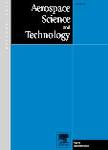版权所有:内蒙古大学图书馆 技术提供:维普资讯• 智图
内蒙古自治区呼和浩特市赛罕区大学西街235号 邮编: 010021

作者机构:Univ Michigan Dept Aerosp Engn Ann Arbor MI 48109 USA
出 版 物:《AEROSPACE SCIENCE AND TECHNOLOGY》 (航宇科学与技术)
年 卷 期:2020年第105卷
页 面:106004-106004页
核心收录:
学科分类:08[工学] 0825[工学-航空宇航科学与技术]
基 金:Boeing Company [PC-1658167] Department of Energy [DE-FG02-13ER26146/DE-SC0010341]
主 题:Multipoint optimization Variable-fidelity optimization Discretization error Adjoint-based error estimation Mesh adaptation
摘 要:This paper presents a method to control the discretization error in multipoint aerodynamic shape optimization using output-based adapted meshes. The meshes are adapted via adjoint-based error estimates, taking into account both the objective and constraint output errors. A multi-fidelity optimization framework is then developed by taking advantage of the variable fidelity offered by adaptive meshes. The objective functional and its sensitivity at each design point (operating condition) are first evaluated on the same initial coarse mesh, which is then subsequently adapted for each design point individually as the shape optimization proceeds. The effort to set up the optimization is minimal since the initial mesh can be fairly coarse and easy to generate. As the shape approaches the optimal design, the mesh at each design point becomes finer, in regions necessary for that particular operating condition. The multi-fidelity framework is tightly coupled with the objective error estimation to ensure the optimization accuracy at each fidelity. Computational savings arise from a reduction of the mesh size when the design is far from optimal and avoiding an exhaustive search on low-fidelity meshes. The proposed method is demonstrated on multipoint drag minimization problems of a transonic airfoil with lift and area constraints. Improved accuracy and efficiency are shown compared to traditional fixed-fidelity optimization with a fixed computational mesh. (C) 2020 Elsevier Masson SAS. All rights reserved.